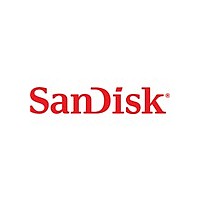FFD35-U3S-48-P80-P SanDisk, FFD35-U3S-48-P80-P Datasheet - Page 55

FFD35-U3S-48-P80-P
Manufacturer Part Number
FFD35-U3S-48-P80-P
Description
Manufacturer
SanDisk
Type
Flash Diskr
Datasheet
1.FFD35-U3S-48-P80-P.pdf
(70 pages)
Specifications of FFD35-U3S-48-P80-P
Density
48GByte
Operating Supply Voltage (typ)
5V
Operating Temperature (min)
0C
Operating Temperature (max)
70C
Package Type
Not Required
Mounting
Socket
Pin Count
80
Operating Temperature Classification
Commercial
Operating Supply Voltage (min)
4.5V
Operating Supply Voltage (max)
5.5V
Programmable
Yes
Lead Free Status / RoHS Status
Supplier Unconfirmed
11.6.3.
The SSD does not require a driver with Windows based platforms. However, if the SSD is
connected through a Host Bus Adapter (HBA), a driver must be installed.
Most adapters have an accompanying driver for Windows. If you do not have a driver, one can
be downloaded from the HBA vendor website.
Partitioning and formatting the SSD can be done using Windows Disk Management or any other
common OS tools.
11.6.4.
The SSD can be used as a standard SCSI disk drive, and does not require a driver with
Linux-based platforms. If the SSD is connected through a Host Bus Adapter (HBA), driver
installation is required.
The SSD can be partitioned using the fdisk command or any similar utility. Formatting the SSD
with a specific file system can be done using the mkfs (ext2, ext3) command, or using any
similar utility.
For more details please refer to the Linux SCSI-HOWTO file.
11.6.5.
Most Unix systems come pre-configured with a SCSI host adapter and a hard disk already
installed on the SCSI bus. Some platforms do not have room for additional drives and require an
external unit to mount the SSD. This external unit includes a 3.5” drive bay, and usually a power
supply and cables.
WARNING: Installing any disk drive on a Unix system is a very complex procedure. If you are
not an expert, consult your system administrator for help. Failure to do so can lead to loss of data
on existing drives in the system.
Refer to your Unix documentation for more details regarding the installation procedure for SCSI
disks under Unix.
To install the SSD in a Unix-based platform:
1. Power down the system.
2. Configure the SSD header settings as described in Section
3. Connect the 68-pin ribbon cable between the SSD SCSI interface and the adapter or the
4. Verify that the SCSI bus is properly terminated. Refer to Figure 13 for different termination
55
80-pin SSD connector to the 80-pin socket. Neither the host adapter nor the SSD should be
at the physical end of the cable unless they are the only two devices connected on the bus. If
additional drives are present in the system, make sure that the cable runs from device to
device in a continuous manner, without branches. Note that some systems require a cable
with two different types of connectors, one for the SSD and one to interface with the
system‟s host adapter.
configurations.
Using the SSD in Microsoft Windows-Based Platforms
Using the SSD in Linux-Based Platforms
Using the SSD in Unix-Based Platforms
Product Specification and User Manual
1 1.5.
SSD (Formerly FFD) Ultra320 SCSI 3.5"
43-PS-0305-00 Rev. 2.2












